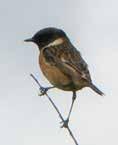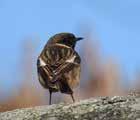
















I hope you enjoyed our Coronation special last month and indeed, the Coronation itself. We’ve gone in a completely different direction for the front covers this month, as you can see! I really hope they bring a smile to your face like they did for us here in the office! It’s always difficult to follow such a strong event but as every day is ‘bring your dog to work day’ for us (Flake won’t let us leave the house without him!), we couldn’t resist! Well, isn’t this sunshine refreshing? I say that, but in about 6 weeks’ time, I’m going to be boiling hot and moaning that I can’t sleep or eat – actually, not eating might be of benefit! Question – is it just me or since joining the 39+ club, do you only need to look at a profiterole and 2 stone instantly lands on your hips? …. thinking about it, it isn’t really the looking that’s the problem is it?!
Anyhoo, we’ve had a busy old month here at Voice HQ, not really sure where time has gone – weddings, holidays, lots of outings & a 26-mile charity walk. That last one wasn’t me, that was our Office Manager Michelle & her hubby. They hopped on the bus down to London and raised money for breast cancer charities by doing the Walk the Walk, marathon Moonwalk, which is as it states, you walk through the night, past the specially illuminated landmarks of London. She did it in an awesome time to boot, 7hrs 29 mins. Anybody who knows Michelle, knows that she is a

force to be reckoned with and she smashed it as predicted and we’re all incredibly proud of them both.
Our other outings this month were Chesterfield Bowl & Trentham Monkey Forest, you may have seen us out and about via our social media? First things first, Chesterfield Bowl is an impressive hidden gem with all mod cons including air hockey (my favourite!). It’s a great place and the food was excellent – absolutely ideal for a party – or just if you want a fun night out!! We had an absolutely fabulous time, and the stars of the bowling show were Lisa and Danielle, although Liam would like me to mention that he achieved a ‘Turkey’ – whatever that is!!
Monkey Forest is very literally one of my happiest places!! I’ve been a few times before and going with the team was a real treat. I’m not a massive zoo fan, purely because of the concept of animals being contained in small spaces (I was okay with Toronto Zoo as each animal had a space the size of Berkshire to roam freely in!!) but to see Barbary Macaques wandering around freely, is just wonderful. Just to note as well, this is a very peaceful group, they are nothing like the ones in Gibraltar & the little babies were beyond cute!!
Anyways, I’m off for a Mojito (gotta be done, the sun is shining!!) we shall see you next month.

Happy Reading,












It is often said that Britain is a nation of dog lovers - but what happens to our canine friends when we have to leave them at home and head out to work?

Dogs are social creatures, pack animals, and they really do not like being left alone for extended periods. Having their special human seemingly abandoned them for hours at a time must be unbearable, is it any wonder that dogs left alone are often prone to destructive tendencies? The combination of loneliness and boredom leads them to decide that “eating dad’s slippers” is a good way to pass the time!
One solution for the home alone pooch is to take them to work with you; this is becoming more common, especially in office based environments - taking your dog to work in a hospital, factory, or restaurant may not be such a good idea. Research by pet food company EUKANUBA, has revealed that almost one in ten (8%) UK employees – that’s 2.5 million people – already bring their canine companion to work.

Evidence suggests that having an office dog around can be therapeutic for the human workers (unless of course someone is allergic to dogs!). Having a dog in the office has been shown to reduce people’s stress levels, and that means all the employees, not just the dog owner.
The mere fact that a dog is there, needing love, petting and trips outside, can help deflect the mental negativity of a “heads down, crack on with it” work culture. A dog makes people stop and pause in the working day, take 5 minutes to play with the animal, stroke it, take it for short walks…
Dogs also up the humour quotient in a working day - our furry friends make us smile with their silly antics, and their presence sparks conversations. Dogs can bring a workplace together, forging relationships that may not ordinarily happen. In other words, having a dog around lightens the mood and thus improves employee mental health.
This kind of reduction in work stress levels and improvement in mental health obviously has a longer-term effect, both on individuals and the business in general. Less stressed staff means less time off with stress-related illnesses, which has the knock-on effect of increased productivity. Here are five good reasons why taking your dog to work is beneficial:

1. Dogs reduce stress
2. Dogs increase morale and team bonding
3. Dogs encourage regular breaks throughout the day
4. Dogs increase productivity in the long term

5. Dogs increase employee retention and reduce sick days



Words of warning…hard as it may be to believe, not everyone likes dogs, and some folks are downright scared of them, consider this before taking your pet to work. And, if several people in an enclosed office environment decided to bring their dogs to work, chaos could ensue - think about staggering the days.
DO YOU TAKE YOUR FURRY FRIEND TO WORK WITH YOU?


Treat yourself to a luxury break at the 4* Gold Award winning Little Red Hen House. An elegant and cosy holiday home just a 7 minute drive from award-winning and dog-friendly Warkworth beach.
✽ 2 spacious en-suite bedrooms


✽ A fully enclosed garden

✽ 2 small to medium dogs welcome (3 upon request)
✽ Fully equipped kitchen, including an American style fridge freezer
✽ Perfect for exploring the stunning Northumbrian Heritage Coastline


✽ Close to a range of dog friendly pubs, cafes and restaurants in stunning Warworth
✽ We have fast fibre Wi-Fi and smart TV’s

Search ‘The Little Red Hen House’ at:
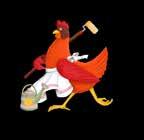






















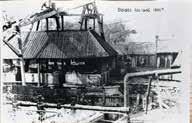
For the past two months I have been writing of various mining aspects from Pinxton’s past. We are fortunate the details quoted are reliable and are corroborated by not just one source but by four different sources.
The first, not necessarily in chronological order, was Matthew Hayes from verbal information he gave to his son-in-law, Matthew Wheeler, and titled ‘The Collier’s Sturgeon’.
Second, we have the written accounts of Henry Walker, serialised under the pseudonym ‘ExResident’, in forty weekly instalments in the local newspaper entitled ‘Pinxton Old and New’.


Henry and Matthew Hayes were both born on Meadow Rows, Pinxton Wharf in 1824. They started worshipping at the Old Methodist Church, which was held in the upstairs library room of Pinxton’s first school for the children of mineworkers, built in 1824 by John Coke. This was the forerunner of the former Wharf Chapel.
In 1841 both young men became leaders of the burgeoning new Notts. Mineworkers Union. At the cessation of hostilities, both Matthew and Henry were blacklisted and had to find work in the Chesterfield coalmines. Matthew later returned to Pinxton and eventually became undermanager of one of the Birchwood Collieries, living at Paul Pry, before moving to Somercotes. Henry never returned to Pinxton to live, but visited occasionally, accompanied by his son in the 1890’s.
The third source is none other than John Spiers who wrote an account of the strike, ‘Pinxton’s Armageddon’. All three of our sources were ardent followers of the
Methodist faith, who you would expect not to tell untruths or exaggerate.
The last of our four sources is the report by the Commissioners employed to gather the evidence. The information is, therefore, well sourced and corroborated. Today five-yearolds are/or have just started school. Imagine mothers of yesteryear taking them to the local mine shaft and watching them being loaded into a wicker basket hanging loose on a long rope and then being slowly wound down a narrow hole some sixty or so yards deep.
In winter the only time these boys saw daylight was on the Sabbath. Just imagine their quality of life, or more appropriately the lack of it. But this is exactly what and how it was. Enough to make one seek solace in drink. Is it any wonder there were so many ale houses and pubs in pinxton? However, that is another story for another time!
Written by Norman Taylor on behalf of The Pinxton and South Nornanton Local History Society.Why not try our Facebook site?
Monthly meeting on 3rd Monday at 7.15pm at The Post Mill Centre











This is a sudoku
1 square grid



81 cells
9 3x3 blocks
1 simple rule: Use all the numbers 1-9, with no duplicates allowed, in any row, column, or block.
This puzzles has been devised by the brilliant Professor Rebus. For more of his puzzles visit www.pitcherwits.co.uk















Barbara Kingsolver has been writing brilliant novels for years. And her most recent – Demon Copperhead - has just won the Pulitzer Prize and been shortlisted for this year’s Women’s Prize for Fiction.


It’s basically a re-working of Dickens’ novel David Copperfield. Kingsolver has described it as a contemporary adaptation and it tells of red-headed Demon’s journey from being born to a teenaged single mother, brought up living in a trailer home, taken into foster care and onward and upward with side slips into downward.

In true Dickensian style it’s passionate, rightly angry, moving and full of humour and totally convincing. And it’s uplifting. It’s set in the Appalachian Mountains in the US – an area with more than its share of problems and this is a very modern take on the age-old story of a child growing up in a challenging world.
The characters are flamboyant. You get so involved with the main character that it’s at times painful to read. He’s got real charm, he may have a lousy start but he’s a fighter and you so much want him to win through. It is superb immersive storytelling and one of those books that as a reader you have to give your full emotional response to. Worth doing it.


1. Preheat your oven to 220°C/fan 200°C/gas 7.

2. Put the sweet potato wedges in a medium-size non-stick roasting tin or baking tray. Stand the cobettes on a board and, using a sharp knife, carefully halve each cobette lengthways, then halve each half lengthways again to make 4 quarters – you should have 16 ribs in total. Add them to the sweet potatoes, spray everything with lowcalorie cooking spray and roast for 20 minutes.
3. While they’re cooking, put the chicken on a board and cut from the thickest side almost all of the way through horizontally, so
This recipe caught the eye immediately. Fresh, tasty, simple to prepare and delicious to eat. Perfect!
that they open up like butterflies. Sprinkle with the peri-peri and set aside. (‘Butterflying’ helps them cook quicker and capture even more of the fiery spice.) Add the chicken to the tin and roast for a further 15-20 minutes or until the chicken is cooked through and the vegetables are tender. While you’re waiting, mix the salsa ingredients in a small bowl and season to taste.
4. When everything’s ready, spoon the salsa around the tin and serve with the lime slices or wedges, coriander sprigs and a big salad.

Ingredients:
• 2 large sweet potatoes, cut into wedges

• 4 sweetcorn cobettes (or 2 corn cobs, halved)
• Low-calorie cooking spray
• 2 skinless and boneless chicken breasts
• 2 level tsp periperi seasoning
For the salsa:
• 2 tomatoes, finely chopped
• 1 small red onion, finely chopped
• ½ small pack fresh coriander, finely chopped, plus sprigs to serve

• Juice of ½ lime, plus slices or wedges to serve











When I was young, there were lotions, potions, creams and medicines in the bathroom cabinet, some of which have stood the test of time, while others have not.
Take for example Germoline. It used to come in a small tin and be applied to cuts and grazes, with or without a plaster. Its smell was so pungent that germs dare not intrude into the wound.

What was Milk of Magnesia for? We were given a spoonful of the chalky, milky mixture if we complained of tummy ache. It has now been withdrawn from sale for not complying with EU recommended sulphate levels.
Calamine lotion is still available: pink and cooling for chicken pox sufferers.
Who remembers Delrosa Rose Hip Syrup? The sticky, sweet liquid provided a vitamin boost for young children as did the welfare orange juice and dried milk.

Cod liver oil was universally disliked but helped provide a vitamin D boost - protection against developing rickets. For constipation was syrup of figs, senna pods or liquorice root. For fever, junior aspirin, crushed between two teaspoons

with a drop of milk added.
Virol was a brand of malt extract which included bone marrow and designed as a nutritional supplement for the feeding of infants. This was remembered as having a pleasant, malty flavour.
The most bizarre home remedy by far was the use of butter. On burns and bumps on the head, butter was rubbed into the affected area.
Just some memories of a childhood in which children’s health was of national importance. What are yours?
Janet and Paul Barrass are All Around the Shire. Find us on or email: oldfield512@btinternet.com for more information.


























Calling all monkey lovers! Recently, the team at Voice Magazine was invited to visit Trentham Monkey Forest, and let us tell you, it was an experience like no other.


The Monkey Forest is home to over 140 Barbary macaques who roam free in a 60-acre woodland. As we entered the forest, we were immediately greeted by the playful monkeys, swinging from tree to tree and enjoying their natural habitat. It was like stepping into a scene from a movie, where monkeys were the stars.
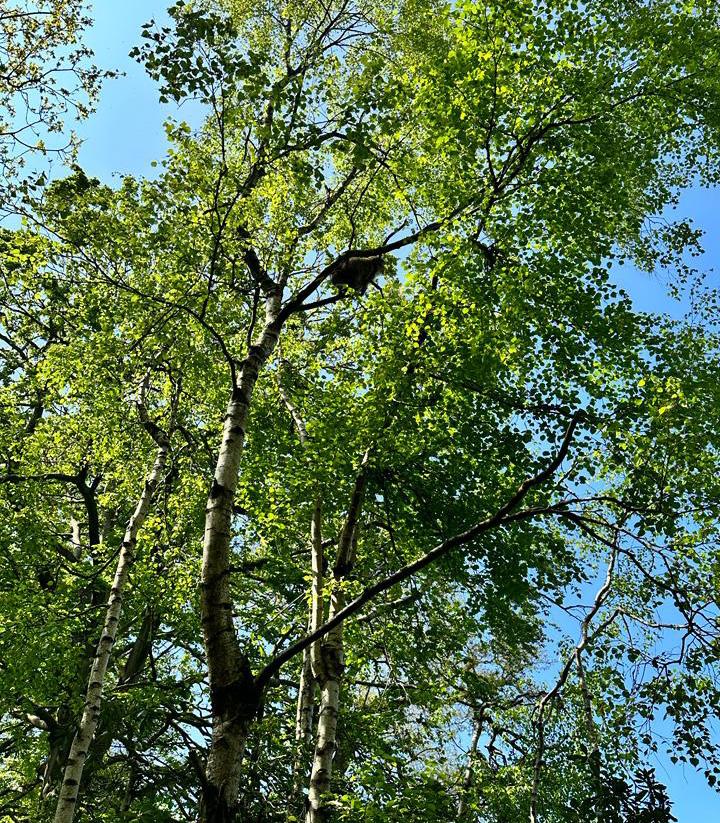
The staff at the Monkey Forest were just as impressive as the monkeys themselves. They were knowledgeable and passionate about the conservation of the Barbary macaques and their environment. We were constantly in awe of their dedication to preserving the natural habitat of these intelligent and fascinating creatures.
As we walked through the forest, the staff were always on hand with interesting facts and information about each monkey, knowing them all by name. It was evident that they had a deep understanding and respect for these animals, which made the experience all the more enriching.

One thing that stood out to us was the Monkey Forest’s commitment to replicating the monkeys’ natural environment as much as possible. They had created a beautiful and expansive forest space, complete with streams and rocks, giving the macaques plenty of space to roam and play.

Overall, our visit to Trentham Monkey Forest was an unforgettable experience. We left with a newfound appreciation for the beauty and intelligence of Barbary macaques and a deep respect for the staff who work tirelessly to protect them.





Trentham Monkey Forest offers ample free parking, a Jungle gift shop, a café, two adventure playgrounds, a Willow Maze, information rooms, picnic areas, and VIP Experiences. Explore hidden trails, enjoy a meadow walk, and get up close with monkeys. It’s a perfect family day out!


If you haven’t already visited, we highly recommend taking a trip to Trentham Monkey Forest. It’s a fun and educational day out for the whole family, and you’ll leave with memories that will last a lifetime.














Mr
Member of the Royal College of Podiatry (RCPod)
20 Years NHS/private practice experience treating foot and ankle disorders for adults and children.
• Offering treatment for the following:

• Corns, calluses, other problematic skin problems. Thickened/fungal nails
• Infected ingrowing toenails ingrowing (Nails surgery under local anaesthetic available)

• Verrucas and warts (hands and feet)
• Fungal skin and nail infections




• High Risk group foot care and diabetic foot assessments

• Foot and ankle pain and sports injuries including injection therapy

This month we bring back one of our

A fairly difficult walk which should take you and your dog around 3 hours to complete. There are some significant uphill and downhill sections and range of terrains so please wear appropriate footwear. There are several stiles, with at least one being tricky for large dogs. There are also a couple of small sections of road, so as usual please take plenty of care.

1. Facing the church from the road, take the lane and signposted footpath to the left of the church. Continue straight ahead. Pass ‘Delph Cottage’ on your left and just prior to reaching a large metal gate, bear slightly left to continue along a footpath with a hedge on your right and a fence on your left.


2. After a short distance pass through a gap and continue ahead to reach a road. Turn left, then ignore the 1st signposted footpath on your right and just before the road bends to the left turn right onto a signposted footpath going downhill.


3. Continue straight ahead and along a single-track road, passing a water treatment plant on your left.

5. At the top of the steps, climb over a stile cross a field, staying close to a stone wall on your right. At the far side of the field climb over another stile onto a footpath.
6. Continue along the footpath with a stone wall on your right for some distance until reaching a T junction with a lane. Turn left and continue until reaching another lane on your left. At this point turn right along a bridleway opposite the lane on the left.
7. Continue with a stone wall on your left and right, then continue into some trees going gently uphill for some distance. Then, when you enter a clearing, pass through a gap in a fence and ignoring any paths bearing left or right to continue straight ahead going steep uphill.


8. At the top of the hill, at a marker post, ignore the path going steep uphill and to the right. Continue straight ahead to descend for a short distance and as the footpath levels out continue until taking a signposted bridleway, turning sharp to the left and downhill.
9. Continue along the bridleway, downhill with a stone wall on your right. Follow the path twisting and winding downhill and pass a tall chimney stack on your right. Continue to twist and wind downhill until passing a stone cottage on your right and then the path turns into a lane.
10. Pass some farm buildings on your left and then after the lane levels out you turn left along a lane on your left and continue going gently uphill. Pass a water treatment plant on your left and continue, ignoring a signposted footpath on your left.
11. Just prior to reaching a large house on your right, turn right through a gap to join a signposted footpath. Continue ahead with a wall on your left
and a fence on your right. Pass through another gap to pass through some trees.
12. Continue for some distance until reaching a marker post on your right. Follow the arrow on the marker post straight ahead and continue to cross straight over a crossroads of footpaths, with a fence on both sides.
13. Continue to cross over two wooden footbridges and eventually passing between some houses. Climb down some steps and then continue straight ahead and steep downhill along a tarmac lane.
14. Upon reaching a T junction, turn right, then, just prior to reaching a road, turn right to step over a low stone wall to continue along a footpath, keeping a river on your left.
15. Continue to pass through a gap. Ignore the path crossing over the river on your left and continue straight ahead, with the river on your left. Continue until the path bears right and begins to move away from the river, then, take the next path on your left.
16. After a short distance pass through a gap and thread between a pub and a stone cottage. At a single-track road turn right. Pass ‘Brookside Cottage’ and ‘Oakfield House on your right, and then after passing a stone cottage on your left follow the road around to the right and continue uphill. When the road bends sharp left turn off to continue straight ahead along a footpath.
17. Continue for some distance to cross over a crossroads of paths and then to cross over a lane with a cattle grid and two stone pillars on your right. After a short distance then turn right along a signposted bridleway going downhill.

18. Continue to the bottom of the hill and ahead to cross over a stone river bridge and then follow the path going uphill. Continue until you pass between some houses and to a road. Turn left along the road for a short distance and just prior to a road on your right, and opposite ‘The Old Poets Corner’ pub, turn right onto a signposted footpath going up a driveway towards some houses.
19. Pass the houses on your right and then pass to the left of a large wooden gate. After a very short distance turn left and pass through a small wooden gate into a field. Cross the field and at the far side pass through another small wooden gate and turn left onto a path with a wall on your right and a hedge on your left. Continue straight ahead along the path until reaching a road and the church.
This walk is for illustrative purposes only. Voice Magazines Ltd takes no responsibility for anyone who chooses to follow this route and encourages all walkers to obey all byelaws and signs and to respect the area they are walking in, ensuring they pick up all dog mess and obey the countryside code at all times.


























The National Royal Navy Association, (RNA), Charity Headquarters are based in the Portsmouth Naval Base from where they co-ordinate and advise over 20,000 members in 370 branches throughout the UK and abroad – We also have a network of over 19 affiliate clubs which you can pop into at any time.
The Association is open to serving and ex Royal Navy, Women’s Royal Navy and Royal Marines and their families
To join; - go to the Royal Navy Association web site or write to our branch secretary, S/m Andrew Hamilton at the branch address. There are no joining or monthly fees, we are all SHIPMATES, (S/m) together. We also run our own Facebook page and there is an RNA Community Facebook page.


The National RNA Standard. All branches have their own identifiable standard.
Shared backgrounds and equality in rank, the same bonds, mindset, and even language (Jackspeak!). We are all equal. We are the heart and soul of the RNA.
To each other and our dependents. Our loyalty is to all our shipmates, our local communities, the personnel, and dependents of the Royal Navy, along with other charities or organisations with naval connections.
Our pride in serving our country never leaves us. Nor do we forget those who have fallen for our country or who fight now. We are deeply honoured to represent them on both at a national and international level.
Friends in fun, fellowship and need. Your shipmates will always be here for you, whether it’s about a job, ideas for a fun day out or just an arm around the shoulder. We will never leave you or your dependents
The RNA has within its structure, several specialist groups where members are encouraged to join if they have an interest in that subject, these include:
• American Football
• Classic Cars
• Cycling
• Fishing
• Equestrian
• Genealogy
• Golf
• Collectors
• Model Makers
• Motorcycling

• Camping
• Caravanning
• Sailing
• Rugby Union
• Winter Sports
• Woodcraft
All the above groups are organised and run by members for members.














Pitcherwits® are crossword puzzles where some of the clues are in pictures. Sound easy? It’s not called “Pit-your-wits” for nothing! The mixture of cryptic and picture clues, combined with Professor Rebus’ unique sense of humour, will keep you entertained for hours.


Across
9 Fed off fixated attempts to get back in the cab (4)

10 Alongside, in stretching out (4)
11 Stack can be safe with hospital treatment (5)
12 Pal in toxic, humble surroundings (4)
13 A while back, with a force to be excited about (4)
Down
2 Employment is a somewhat amorphous exercise (3)
3 Cut up, formerly (3)
7 Wish to happen from eternal springs? (4,3)
14 Personal boomerang post? (1,1,1)

15 Lotto ought to be reduced, also (3)
1 Took it out of the socket, but still stuck at it? (7,4)
5 Abstains from linking school head, say, with gum sticks (7)

14 What’s all this about clarets being red? (7)
Down
1 Big cats hunting in the Alps for landfill nuisance? (7,4)
4 First red space, man? (4,7)
16 Resigned, maybe, like a transformer? (7,4)
6 Case is Mick’s: a bit earthshaking! (7)

8 Few took the earl to be in a state of general health (7)
This puzzles has been devised by the brilliant Professor Rebus. For more of his puzzles visit www.pitcherwits.co.uk
































































Is your

If so, when was the last time you told him you loved him? In fact, have you ever told him that?
When my dad passed away in early 2020, I was so grateful that the day before he died I was able to hug him and tell him I loved him. Of course, I didn’t know that day I visited him in hospital would be the last time I would see him. And isn’t that the point? None of us know how long we have left, the parent you saw yesterday, perhaps got irritated or annoyed by, may not be around tomorrow. It’s a scary and sobering thought isn’t it?
We live in a much more open society; women and men are encouraged to share their feelings more and get things out in the open - so how come we don’t tell our nearest and dearest how much we love them?
It doesn’t matter if we “think they know”, sometimes the other person needs to hear the words too, and hearing those words could make a positive difference to their state of mind and wellbeing.
Male mental health has become a huge topic over recent years, the days of the British “stiff upper lip” are, thankfully, fading away, but even now, men are notoriously reluctant to talk about their feelings, preferring instead to keep them bottled up. This is a problem. A BIG problem.
Here are some scary statistics:
• Three times as many men as women die by suicide
• Men aged 40 to 49 have the highest suicide rates in the UK
• Men report lower levels of life satisfaction than women, according to the Government’s national wellbeing survey
• Men are less likely to access psychological therapies than women: only 36% of referrals to NHS talking therapies are for men
• Men are far more likely than women to go missing, sleep rough, become dependent on alcohol and use drugs frequently.
All of us are familiar with gender stereotyping when it comes to women - looking a certain way, wearing make-up, taking care of the babies etc. - and we
are aware of how damaging this is, but negative gender stereotyping also affects men. They are often expected to be the breadwinners, to be strong, dominant and in control, and yet at the same time to be “soft, caring, loving, nurturing”. It’s no wonder that some men no longer have any idea of how they are expected to act and thus turn to “coping mechanisms” like drink and drugs. Even worse, there is the rise of militant “toxic masculinity”, as demonstrated by the likes of Andrew Tate.
This Father’s Day, tell your dad you love him. Tell all your male relations and friends you love them (yes, even…especially…if you’re a guy!). Make it acceptable to share feelings and emotions.
PS - if you know a man who is struggling with mental health issues, point them in the direction of Andy’s Man Club (https://andysmanclub. co.uk/).


















Mike is back with a tall tale and a punchline that will have you wincing! Enjoy!
Mike is always glad to hear from you at : mike.musings@outlook.com
A stranger walked into an Alfreton bar and saw a large Bells Whisky bottle on the counter. As it appeared to be stuffed full of £20 notes he was understandably intrigued and after ordering a drink asked the barman if it was a charity jar.
“No,” came the reply, “the money can be won by any customer if they pass three tests and providing they put £20 in the jar, they can take part. It’s open to anyone and you can have a go. I reckon that there must be over £12,000 in there now.”
“What are the tests?” asked the stranger.
“Well,” replied the barman, “you must first put your £20 in the jar. It’s non-returnable though. Those are the rules.”
The stranger thought about it for a while, and after another drink, stuffed a £20 note into the jar, before asking, “Well, what are the rules?”
“OK,” said the barman, “here’s what you do. You must pay for and drink a half bottle of whisky in less than a minute without pulling a face. Then, out the back there is a pit bull chained up. He’s suffering badly from an infected tooth and you have to remove it with your bare hands. Many have tried and failed in the past, but you look capable. Finally, my elderly maiden aunt, who has never ‘been with a man’ will be waiting expectantly
upstairs and you can have the honour of ‘being the first.”
“Ach, a’hm no daeing that. A’hm no an eedjit,” replied the stranger. NB – did I say he came from Arbroath? “Ye’ve jist coast me twenty poonds.”
After a while, and a few more drinks, he changed his mind however, and handed over the money for the half bottle which he downed in 58 seconds flat. Tears were streaming down his cheeks as he staggered out the back door to find the chainedup pit bull.
He’d gone for about ten minutes during which time, those left in the bar could hear loud growling and blood curling screaming. Some felt quite squeamish, especially when the noise gradually ceased and a deathly silence followed.
Just as they were thinking that yet another ‘punter’ had succumbed to the challenge, the stranger came staggering back into the bar. His clothes had been ripped to shreds, with blood seeping from the many cuts and gashes all over his body.
With eyes shining brightly however, he looked straight at the bar and triumphantly, albeit somewhat drunkenly, enquired of the barman, “Noo, whaur’s thon lassie wi’ the bad tooth?”















We
unless you’re planting into fresh compost which often has nutrients to encourage growth. Then remember to keep watering until established and in periods of hot dry weather –Water in the morning if possible. A good drench is better than small amounts frequently. Evening watering is next best although it can encourage slugs as the ground will be wet overnight. Preferably don’t water in the middle of the day, it can scorch blooms. Hanging baskets dry out fast and water retaining gel can help counter this.
It might seem odd to talk about pruning when so much is bursting into flower, but there are some shrubs which need it now if you’re going to get the best out of them next year. These include those which flower in spring such as philadelphus (mock orange) forsythia and flowering currant. In order to get a good blossom show year on year they need to be cut back as soon as they’ve finished flowering. Take out dead or damaged stems to ground level and prune up to a quarter of old stems to near the base. On stems which have flowered this year, cut back to a lower strong growth.

If you have still got tulip foliage remaining in pots, and with this year’s cold start to the season that’s quite possible, it’s a good move to lift and plant them in a border. This not only frees up the pot for summer planting, but tulip bulbs which might show again next year have a better chance if fed with tomato feed and given a new home. Leave them in the pot and you’re more likely to get lots of leaves and small flowers.
Top OUR NEW GARDEN IS YOUR LOCAL, PROFESSIONAL GROUNDS & GARDEN MAINTENANCE COMPANY We have some availabilities for regular lawn mowing. More information can be found on our website - www ournewgarden co uk or on yell com





Tip:

should be safe to put summer bedding plants out now and the key to getting a brilliant show is to add some slow release feed when you plant...



Garden rooms aren’t just a room in your garden, they are rooms which add value to your life & your home. Giving you extra space in the garden no matter the weather... and let’s face it, British weather is very unpredictable!
A fully insulated garden room is just like a room in your house, and can be used in all weathers. It has the added benefits of not needing deep foundations, lengthy (and costly) building work, or the inconvenience of having an extension. They can also be installed in just a few days! Not only that, they generally fall under the permitted development rights, so it can be a quick turnaround from order to installation. From garden bars, home offices & studios, to garden gyms and chill out spaces, finding a trustworthy company which can design, deliver & install bespoke garden room solutions throughout the UK is priceless.

Cabin Master have been in business for over 20 years. They offer the full end-to-end service, including base/ foundations, electrics, flooring and painting, bringing you that much needed extra space you can use all year round. So, if you’re searching for the perfect garden room, Cabin Master are the experts! Their factories in Derbyshire manufacture your building to order and their 10 year guarantee gives you great peace of mind.
Choose from their zero-maintenance Marley Board cladding, timeless, rustic Redwood, or vibrant, luxurious Cedar to create a stunning and useful feature in your spare garden space. They offer something to suit all garden styles and needs, designed completely around you. Cabin Master also ensures that everything you need comes as standard, but they also offer lots of additional options to help you personalise your garden room and get the most out of your space, from internal partition walls, and air conditioning to bi-fold doors and external lighting, plus much, much more!
If you’re looking for a quirky, unique entertaining space, then Arctic Cabins BBQ Cabins are the ultimate in luxury log cabins! They come fully installed including a central BBQ unit, so you can enjoy BBQing all year round in the comfy, cosy Scandinavian-inspired surroundings with family and friends. The Arctic Bar version is fast becoming their best-seller, with a built-in timber bar and drinks rack, offering space to entertain, just steps from home. Your Arctic Cabin will become the heart and soul of your garden! So, whether you need the space for family gatherings, romantic evenings, or a relaxing place to chill out in, they are perfect.
With over 20 years experience in designing, manufacturing and installing garden rooms throughout the UK – you only need to look at their Trustpilot review pages to see their customers’ journeys and experiences are outstanding, so you can trust Cabin Master & Arctic Cabins to deliver your perfect garden space.


Call: 0115 932 8888





One of the region’s most spectacular flowers is something we often take for granted and indeed, barely notice, the common gorse. In the Peak and North Derbyshire, we have two gorse species, the common gorse (a big, bold, brash shrub), and the western gorse (an altogether more subdued species). As its name suggests, the latter is rather restricted to western Britain and so we are on the eastern edge of its distribution, and it is not so common. The name ‘gorse’ comes from AngloSaxon ‘gorst’, and its alternative name ‘furze’ from ‘fyrs’, also Anglo-Saxon. Place-names like Fir Vale in Sheffield derive not from conifer trees but from ‘furze’ on the common, from a time when this plant was very important to local people and the rural economy. This was when most people, and especially the poorer ones, relied on the heath and common for their subsistence.
Being so abundant, gorse was significant to people and figured in folk culture. It was said that ‘when gorse is not in bloom, then kissing is out of season’, the reason of course being that this shrub flowers all year round. That said, its main flowering period is in spring when it can be truly spectacular. Indeed, in times past, before urban sprawl and ‘improved’ farming swept away most of our heaths and commons, the swathes of bright yellow across the landscape were amazing spectacles. It was said that Swedish botanist
Carl Linnaeus, one of the key founders of modern natural history and scientific botany, came to Britain and was profoundly affected by the vista when first seeing gorse in bloom. Not found as a native eastward into Europe, gorse is a denizen of the western seaboard. Linnaeus visiting from Sweden had never seen it en masse before. When shown an entire landscape covered in the yellow of common gorse on Putney Heath, he fell to his knees and gave thanks to Almighty God!
Along with being visually spectacular, gorse or furze, was also especially useful to medieval communities in some places until the 1900s. Many farms in Derbyshire and the Peak would have had ‘furze fields’ where gorse seed was scattered on poorer land to grow gorse. It grew in abundance on poor, sandy soils (because it ‘fixes’ or traps atmospheric nitrogen using nodules in its roots), and thus was a great provider of forage for grazing livestock. Put through a gorse shredder or cutter, the resulting greenery was fed to the animals. Along with this, gorse burns ferociously and cleanly to leave little ash. It was therefore good at starting fires (as kindling), and for communal baking ovens or cloams. The bottom slice of a baked loaf was cut off with its ash, but the rest was good to go. Gorse made good temporary fencing on open land such as common or heath, and when seen in hedgerows today, it often indicates a one-time heathland. Bundled up and tied to a long stick, you could use it to sweep your chimney, a practice described for the Hope Valley in Derbyshire.
Gorse is also excellent habitat for birds such as whinchats, stonechats, yellowhammers, and meadow pipits.
